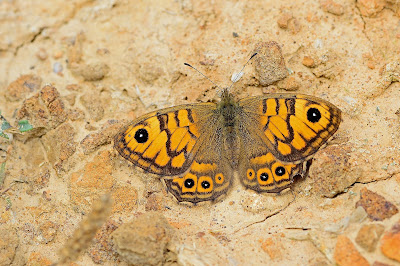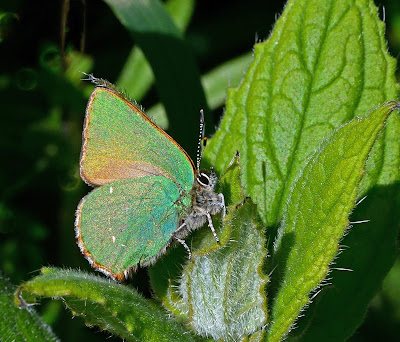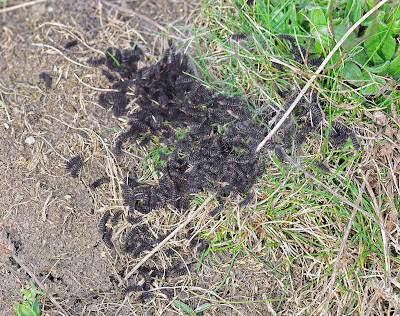Despite the cool wind that has blown for a few days now the butterflies on our landslip have found those sheltered places where they can enjoy the sun and nectar on the abundance of spring flowers.Today the list of sightings at Compton Chine included at least ten Glanville Fritillaries with a mating pair,three male Common Blue, four Green Hairstreaks,a Dingy Skipper, a Small Copper,and two Small Heath.
Back at Afton Down Chalk pit which overlooks the chine there were several Small Blue.













































